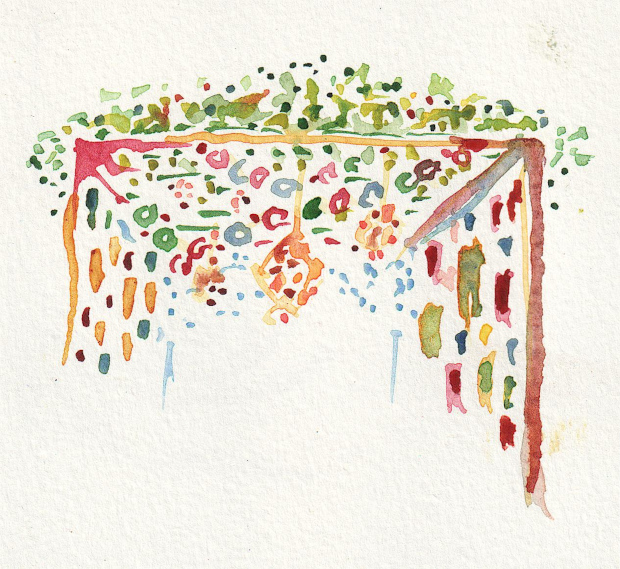
Every year I come up with new ideas on how to decorate a sukkah. This year for the first time I led a group of children, teens, and adults in creating sukkah decorations.
What is a Sukkah?
A sukkah is a temporary structure that Jews eat (and a few sleep) in during the fall holiday of Sukkot. It is topped with natural materials such as branches or bamboo. I enjoy decorating our sukkah. This gives the whole experience an extra hiddur mitzvah (beautification of a good deed).
What Kinds of Decorations?
Living in the Northeast of the U.S., the weather is unpredictable in the early fall. It often rains. So we have to waterproof our decorations as much as possible. To find ideas for decorations, I started looking up: “waterproof loop chains”. Having no success with that search, I soon learned that I should just look up “sukkah decorations”.
A sukkah has four walls. It also has schach, branches or slats of natural material that cover the top. In my mind, the decorations are divided into wall pictures and top hangings. If you have a solid wall on at least one side, that works for wall pictures.
When I was growing up, we had a canvas sukkah. It was hard to decorate the sides of canvas. So we hung decorations from the top. I have memories of sitting in the kitchen with my mother z”l, stringing cranberries.
In this post I will present different kinds of decorations.
Laminated Pictures
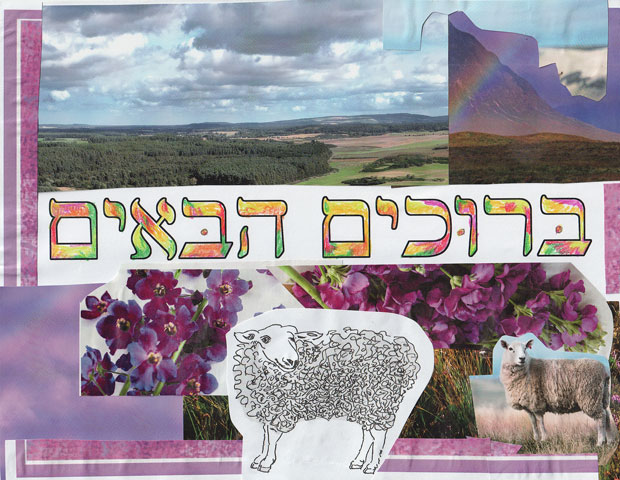
This is a laminated collage that I created with some cutouts and a printed Hebrew bruchim habaim (Welcome). I typed the letters in Hebrew using Gimp, a free software program. The cutouts are all from magazines or old flyers except for the ink sheep. I drew that one a few months ago. I colored in the letters with Derwent colored pencils.
When my children were little, they would bring home all kinds of laminated pictures. Many of these are still hung in our sukkah each year. The walls of our sukkah are covered with laminated pictures.
Pictures can have text, photos, glued cut outs from magazines or drawings. You can use crayons, markers, colored pencil or paint. I like adding new family photos to our sukkah each year. You can use hook and loop adhesives to attach your laminated picture. Hook and loop tape comes in rolls. One side is fuzzy. They easily attach and detach from each other. It makes it easy to re-use the pictures each year. I have bought hook and loop tape in the past on Amazon. This year I bought a few rolls of different sizes from the sewing company called Wawak.
One good idea for a sukkah picture is make a collage. First, take a photo. Then cut all kinds of magazine pieces, construction paper, and pretty papers. Place the photo in the center of a standard 8.5 x 11 printer paper. Create a design around the photo with cut outs. It can be color-themed, look like a sukkah, or just be whatever appeals to you. Once you are happy with the design, glue everything into place. Then run it through the laminator.
Last year I bought a laminator. You can find them on Amazon for not too much money. I used to struggle with clear contact paper to cover photos. A laminator is much easier. You also need to buy special plastic sleeves to enclose your photo or picture. This is a fun craft project for children or for seniors.
Loops and Chains
A traditional sukkah decoration is a long chain of loops. One could make paper loops in a sukkah. However, these are not waterproof. This year we made loops out of colorful plastic cable ties. You can buy colorful plastic ties on Amazon. You can see the loops in the pictures below of the etrog sun catcher and the plastic bottles apple.
Etrog Sun Catchers
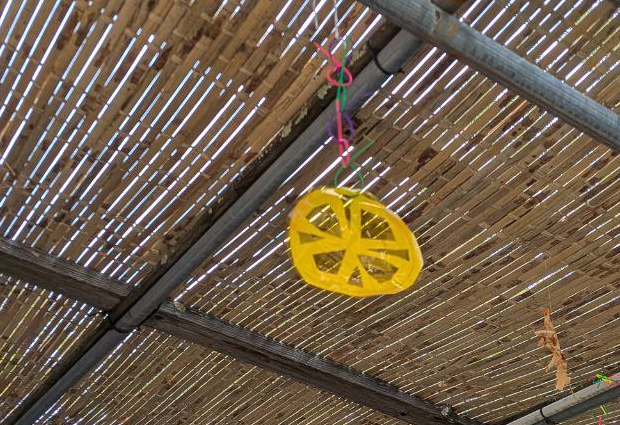
I found a blog post on creating these bright citron sun catchers. You need yellow cellophane (available on Amazon), yellow or orange construction paper, scissors, clear plastic tape, and string. The tricky part is the cutting of the paper. Other than that, I found children of varying ages were able to make these.
Someone in our group used red cellophane to create a big pomegranate. I am thinking next year I will buy purple cellophane so we can make grape sun catchers.
Apples Out of Bottle Bottoms
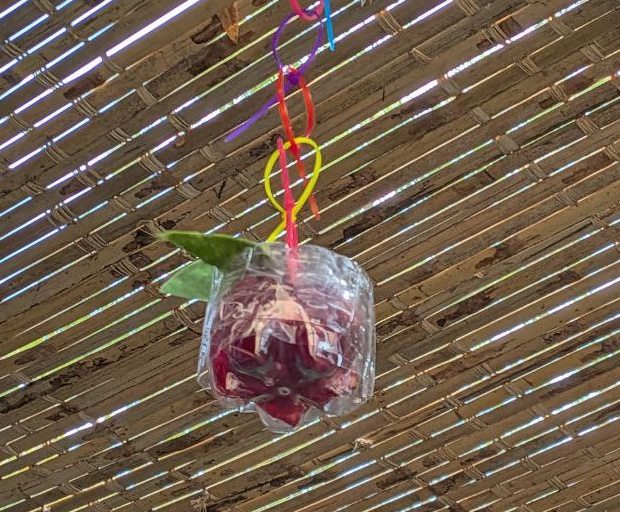
These apples from plastic bottles are a bit challenging to make. Children would need supervision and help to make them. First, you have to collect plastic water bottles with bumpy bottoms and with smoother bottoms. You create the apple by putting one plastic bottle top on the top and the bumpy one on the bottom. You add bits of red cellophane and/or red fabric to the inside. Green leaves go on top. I did the leaves with felt and sewed two leaves together. Then I glued them to the top of the apple. If you want to introduce hand sewing to someone, this is a good project to try. The hardest part is making two holes on the top of the apple in the plastic.
I am hoping to find even more projects to decorate the sukkah for next year.
Happy 5786! Hope you and your family have a happy, sweet new year.
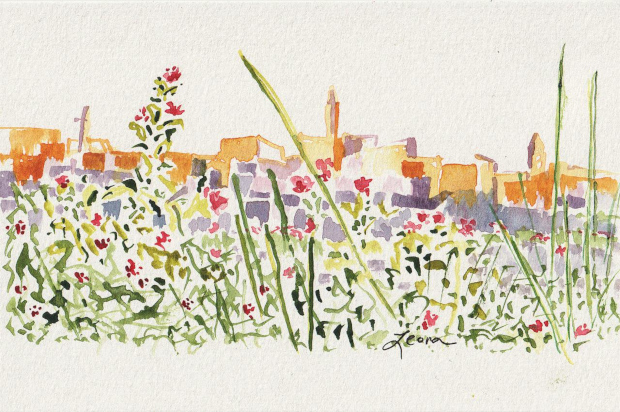
My last visit to Jerusalem was almost ten years ago. I photographed some red flowers billowing in front of the Old City of Jerusalem.
A few days I was looking for inspiration. I found a printout of the photo I had taken. I thought about shapes, colors, and composition. I wanted to capture the beautiful Jerusalem light and bring a little joyous color to my viewers.
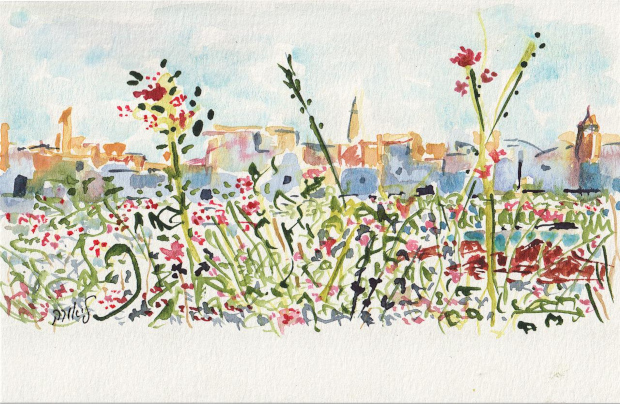
I hope you enjoy these watercolors.
And to end off, here is a shofar. We approach the New Year of 5786. The shofar tells it is time to do teshuva (repentance). May we all be blessed with a year of happiness, health, prosperity, and good deeds.
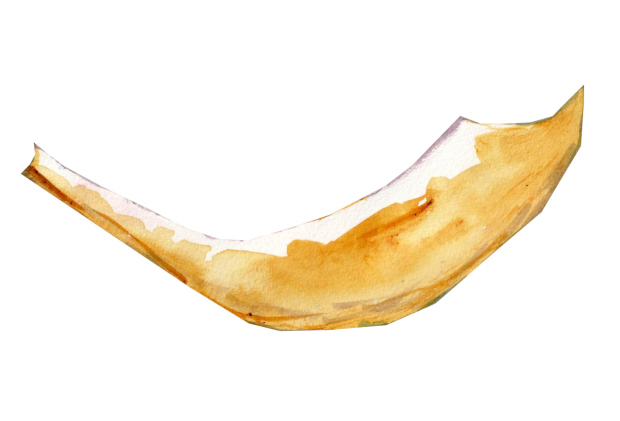
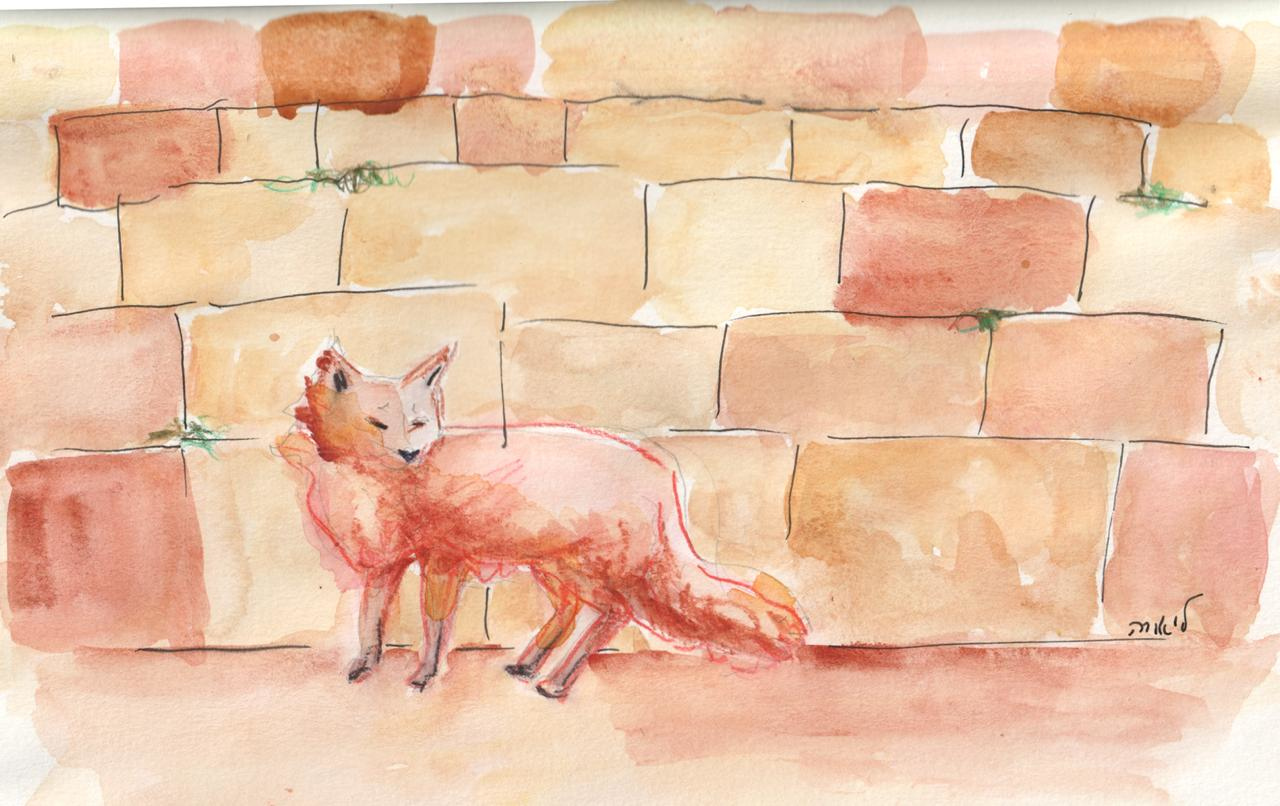
Tisha B’Av is the saddest day of the Jewish calendar. The Beit Hamikdash (holy Temple) was destroyed. In addition to fasting, one is supposed to limit activities to those that are mournful. I wrote more about Tisha B’Av in past years in particular about the story of the fox in ruins and another fox in ruins watercolor.
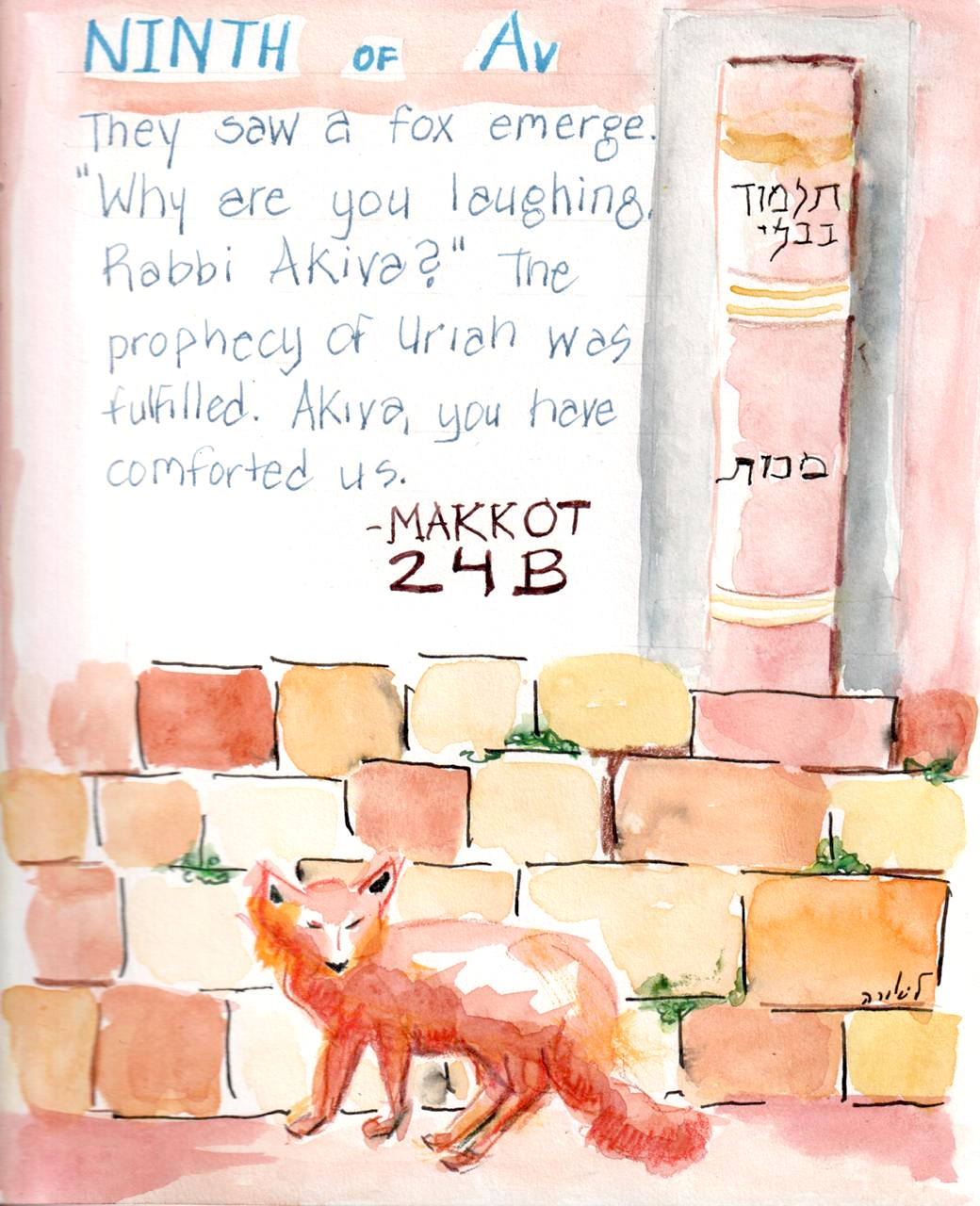
In this version I added an abridged version of the text from Makkot 24B. I added a volume of Makkot, one of the volumes of the Talmud, to the right.
They saw a fox emerge. “Why are you laughing, Rabbi Akiva?” The prophecy of Uriah was fulfilled. Akiva, you have comforted us. – Makkot 24B
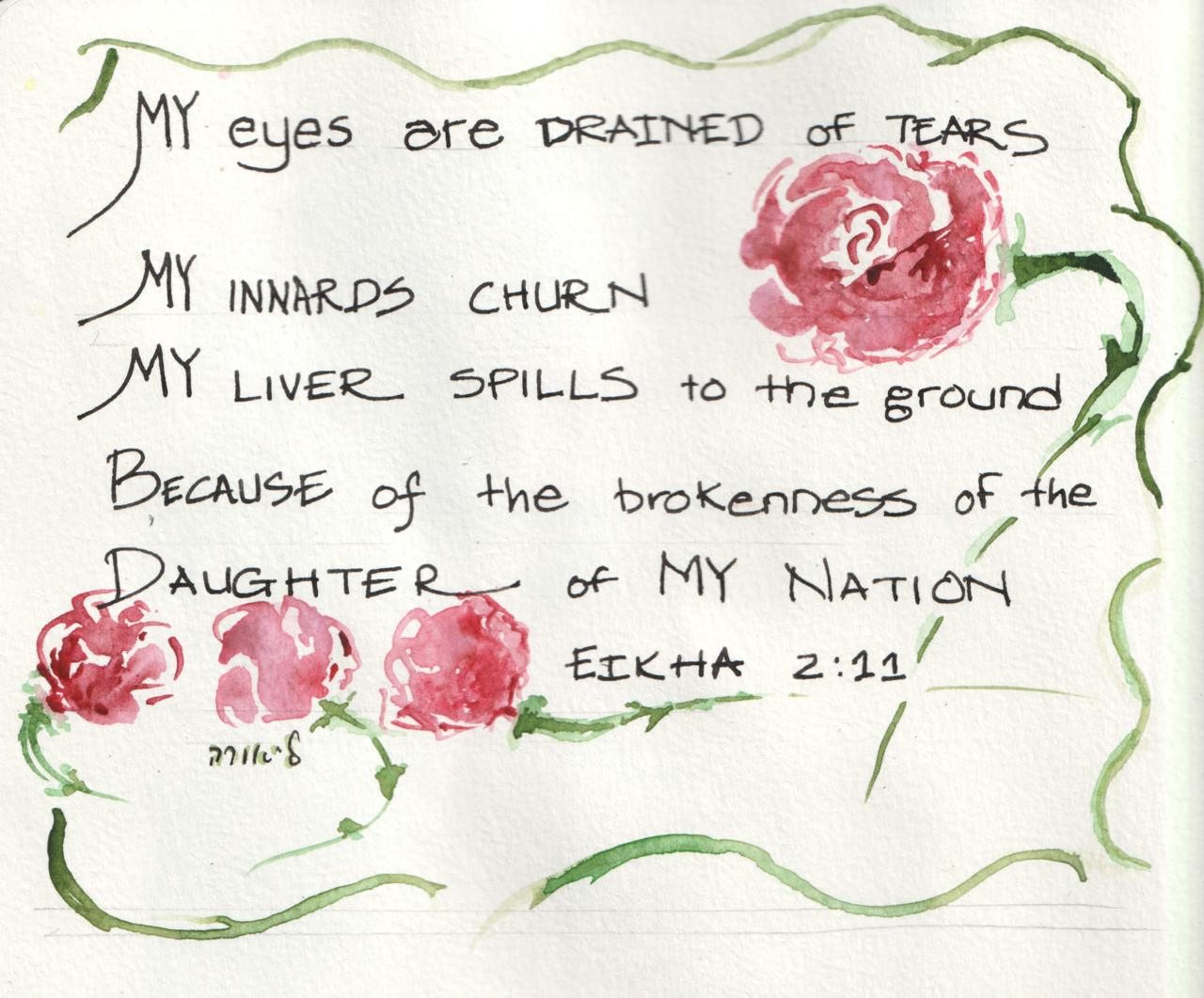
This year I also worked on my calligraphy by copying sections of Eikha (Lamentations), the megillah (scroll) that we read on the night of Tisha B’Av.
My eyes are drained of tears
My innards churn
My liver spills to the ground
Because of the brokenness of the daughter of my nation
— Eikha 2:11
This sketch was created with ink and watercolor on Tisha B’Av 5785.
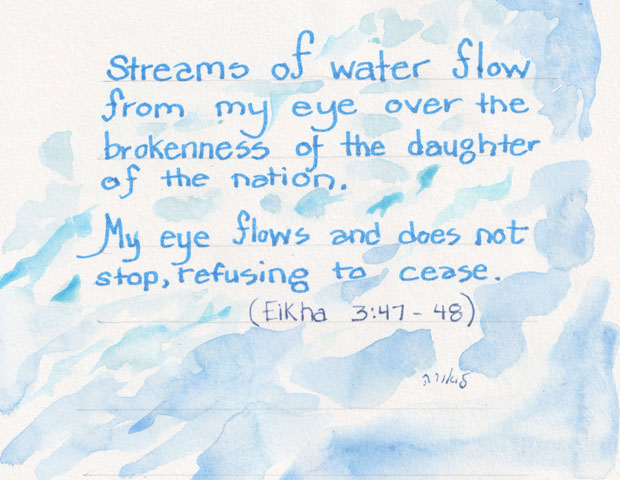
Streams of water flow from my eye over the brokenness of the daughter of the nation.
My eye flows and does not stop, refusing to cease.
(Eikha 3:47-48)
I love the feeling of painting water with watercolor.
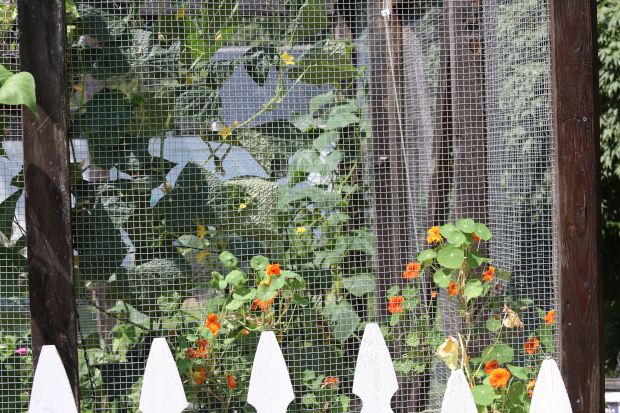
Because of the deer and other critters in our neighborhood, I grow my cucumbers in a cage. Pictured are the cucumber vines and climbing nasturtium. Nasturtium have yellow and orange edible flowers (and edible round leaves) that you can use to dress up your salads.
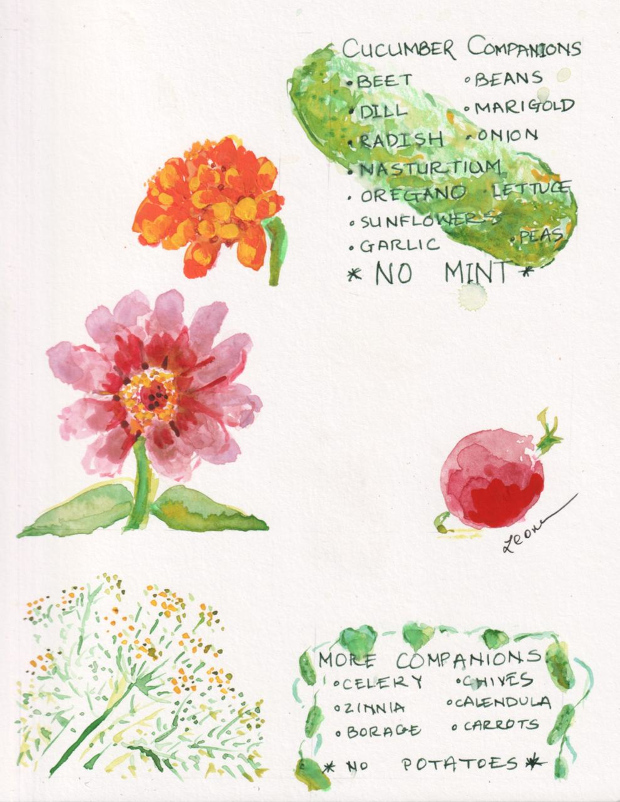
Growing cucumbers is not as simple as stick a few seeds in the ground and watch them grow. One needs provide good soil with proper nutrients, enough water, and a way for the plant to climb up. In addition it is a good idea to plant cucumber companions in the general vicinity of your cucumber plants. In order to learn what to plant and what not to plant, I did this art illustration. I already had nasturtium and radish in my cage. This year I sprinkled several zinnia seeds and moved the marigolds into the cage. I also removed some mint that was growing directly outside the cage. Dill is one of my favorite herbs, so I made a special effort to keep the dill going strong by adding compost around the base of each dill plant every few weeks.
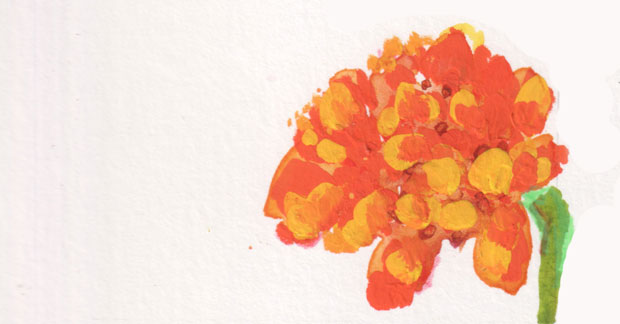
Marigolds are easy to grow. They are a good beginner plant. For some unknown reason, few of the marigold seeds that I saved from last year germinated. I was able to buy several marigold seedlings for a low price early in the spring at our local farmers market. Those are flourishing.
Painting flowers is harder than it looks. I first painted the marigold with watercolor. I didn’t think the orange was strong enough. I switched to gouache and applied thick, small strokes. I am happy with the result.
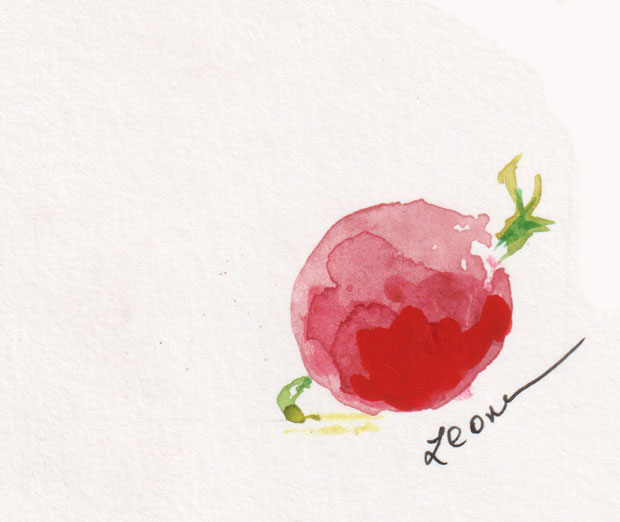
Radishes are easy to grow. You stick the seeds in the ground, and a week later you have round little leaves poking out of the ground. Make sure to plant in loose, rich soil, and in a month you will be pulling radishes. Sometimes I eat radishes raw. Sometimes I ferment them in a little jar with sea salt and filtered water. You can also steam the radishes if you like them sweet.
Radishes are easy to paint. Make sure you have a nice, thick red paint and a good brush. Paint a few layers, leaving one side a bit on the white side to show form.
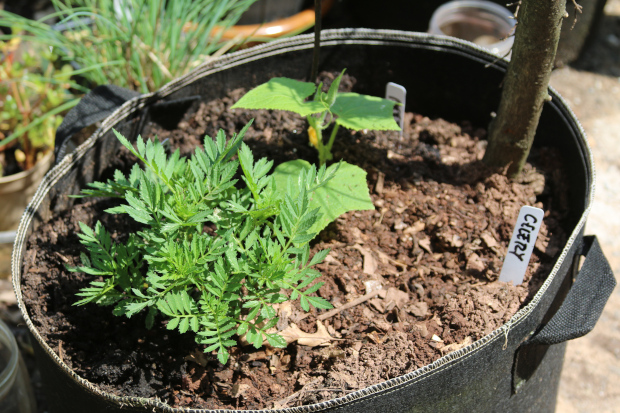
A friend gave me these large black cloth bags for planting. I am experimenting with a little container garden. Pictured are marigold and cucumber seedlings. I put in some celery seeds. Hopefully, sometime this fall we will get some celery.
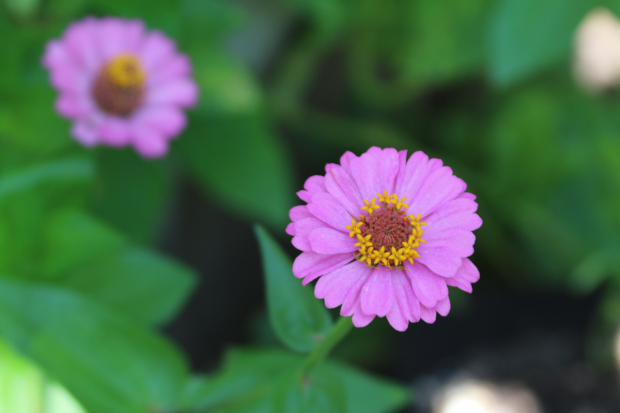
Zinnia come in a variety of colors. If you have full sun, a plot of land with decent, loose soil, and determination, you can sprinkle zinnia seeds in May or early June and receive the reward of flowers in the summer.
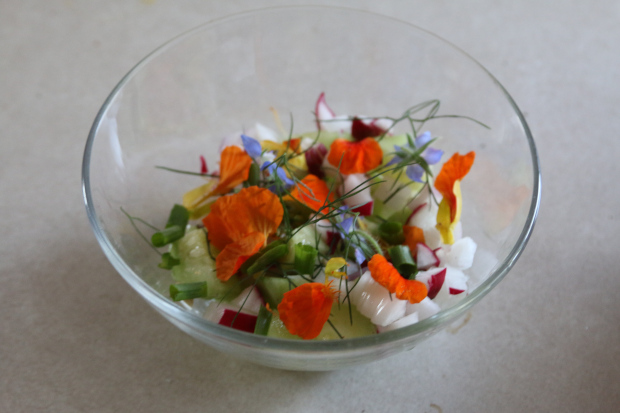
Have you ever eaten a nasturtium flower? What would you do with a radish? Have you eaten a cucumber that is not from a supermarket?
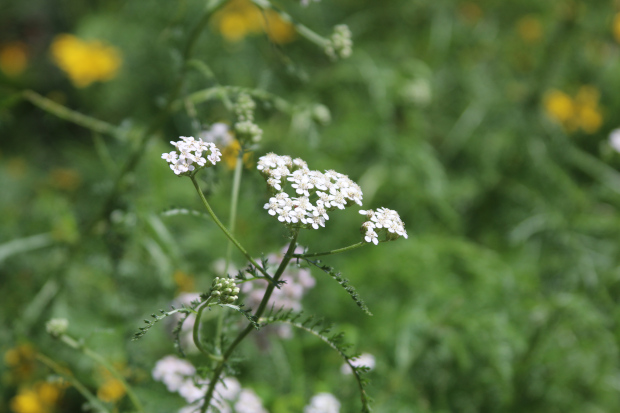
Someone asked me: why are you posting yarrow? Is it your favorite flower? No, I responded. My favorite flower, at least for this year, is cosmos.
So why am I posting about yarrow? I realized I am posting in order to learn yarrow’s health benefits. Here are a few:
- Improve digestion
- Accelerate wound healing
- Alleviate colds or the flu with yarrow tea
- Reduce inflammation
You can learn more about the healing properties of white yarrow (yarrow millefolium) elsewhere.
Yarrow comes in a variety of colors. In my backyard I have big yellow yarrow flowers that are currently in bloom in July. In the front of my house I have white yarrow. Yarrows are perennials. The Latin name is Achillea.
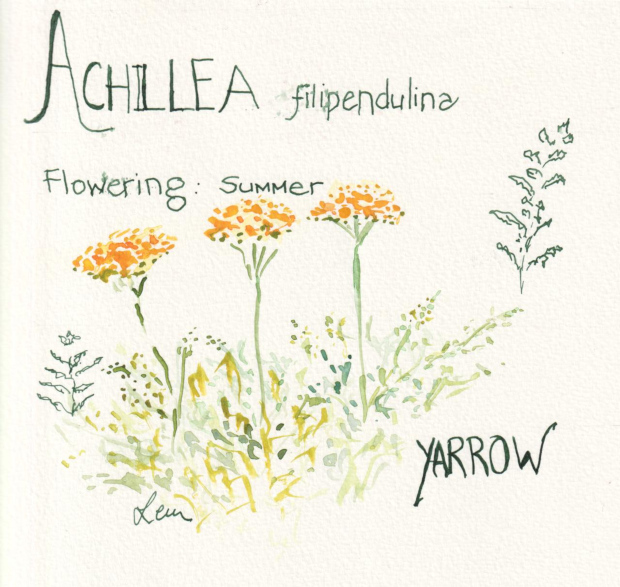
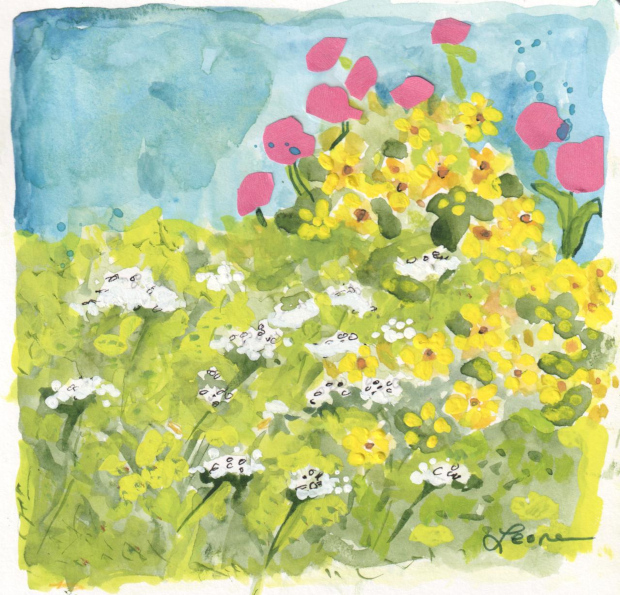
Pictured is achillea millefolium (white yarrow), coreopsis, and lamb’s ear flowers. I painted the illustration with watercolor, gouache, and collage for the bright pink lamb’s ear flowers.





















